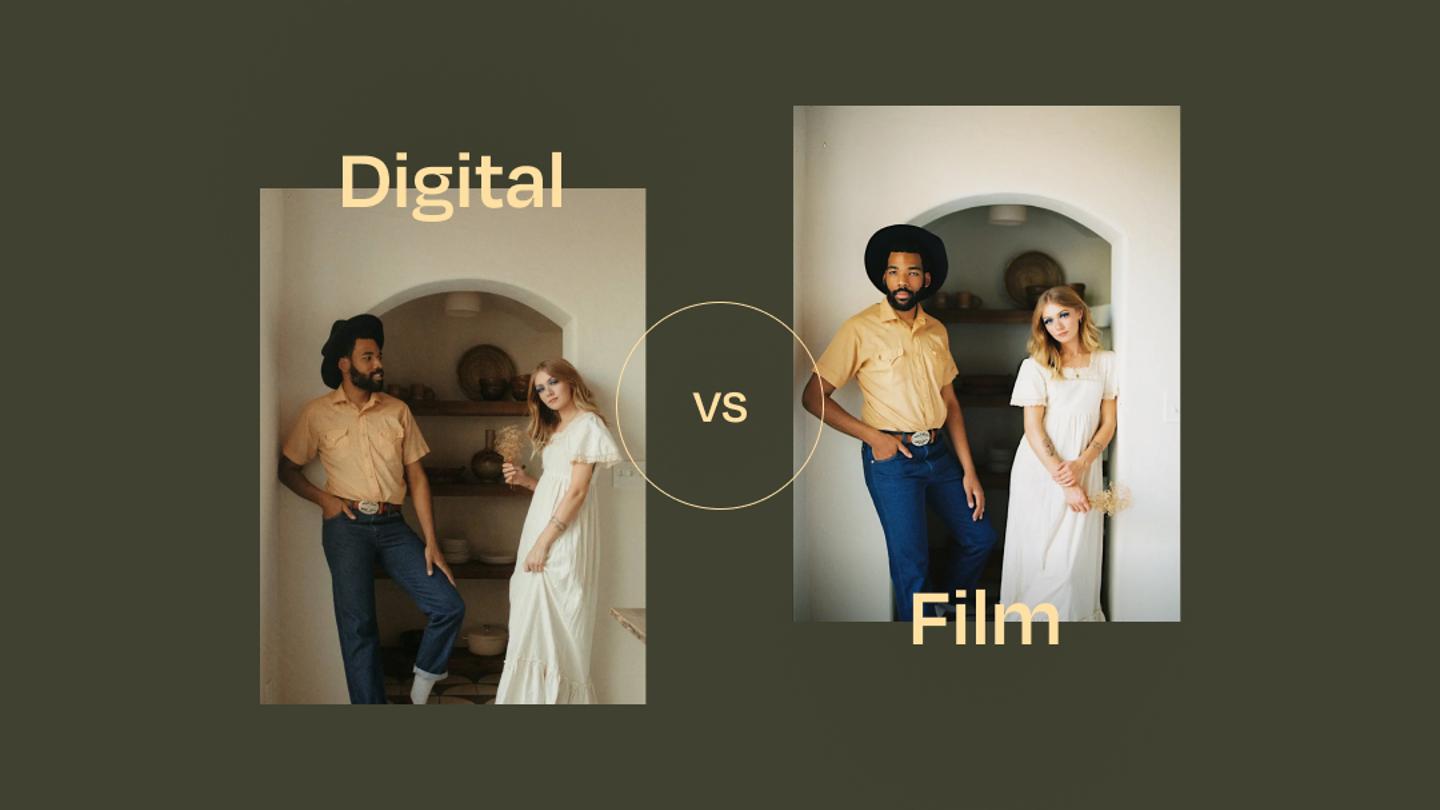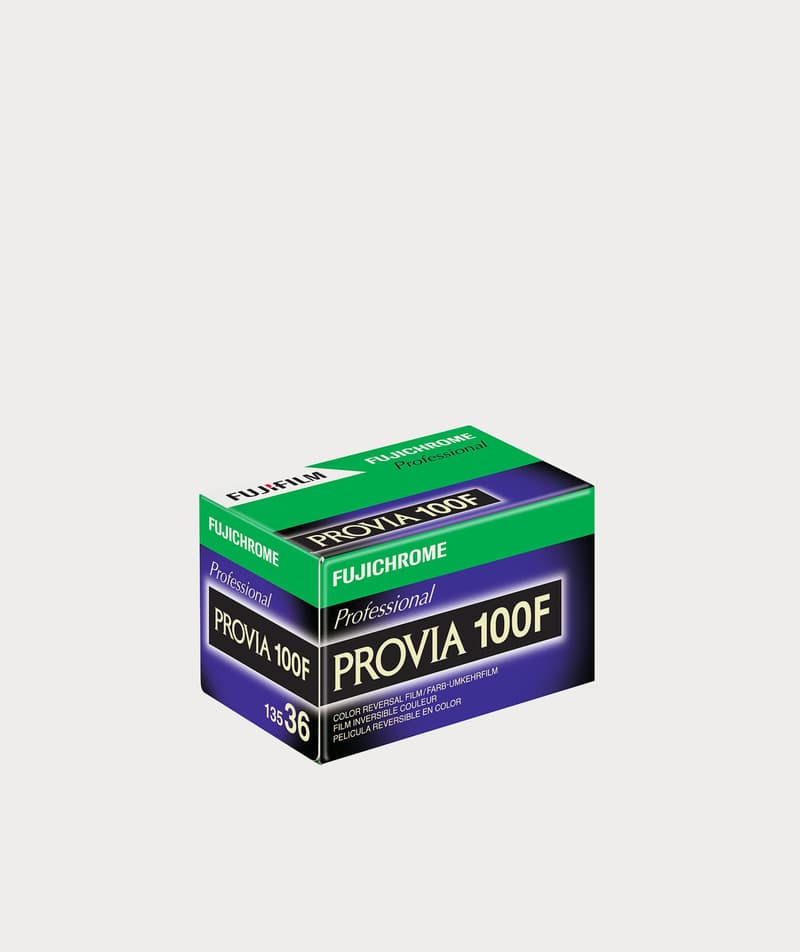What Are Some Of The Differences Between Film And Digital Cameras?
Skip to content Skip to navigation
Digital vs. Motion picture | Differences, Opinions, and Thoughts on a BIG Fence
Which ane is correct for you? I'm past no means an expert at either, but I'yard here to give you insight based on my experience and knowledge.

I'chiliad a photographer by nature, writer by option.
I alive and breathe the work of my camera. Between editorial photoshoots, campaigns, commercial, personal lifestyle shots, and weddings — I've dabbled into various types of photography throughout my career. From lackluster senior portraits to working with big brands, like AirBnb or Subaru Usa, I additionally dedicate my noesis to the beautiful team here at Moment. Alongside my experience and practise, my gear repertoire evolves in tandem. Equally an creative person improves their arts and crafts, so do their tools. The need to change, shift, or alter our arroyo is natural and, in fact, necessary.
I've been strutting forth global landscapes with digital cameras around my neck for ages. It wasn't until more than recently, in the past few years, that I've dedicated myself to mastering a photo culling: film. The tirelessly cumbersome, somewhat archaic, and hard-to-replicate film photography medium. Later on snapping a few pics on a girl'due south trip in Joshua Tree in 2017, being and so enamored with how effortlessly the photos looked, I haven't looked back since. I've defended myself to shooting nigh entirely 35mm or medium format for personal projects, saving digital photography for larger campaigns that require a commercial status-quo.
However, no matter my opinion or excessive use of one medium over the other, my perspective continues to evolve. Digital is no better than film, and film is no better than digital. I'm non a purist of whatsoever sort, and I'll stand up by that. My trip to Southward America, before the pandemic struck, was shot entirely on digital for fear of motion-picture show getting ruined by the rampant humidity in the Amazon. Alternatively, I photographed a week-long commercial shoot for Subaru on moving picture. Heck, I've done weddings on film, and I've done weddings on digital.
Yous get the bespeak — there's room for both.
Just, which one is correct for yous? There's a large difference in quality, considering the various types of cameras, and an even larger deviation in workflow. I'm past no means an skillful at either, merely I'm here to requite y'all insight based on my experience and knowledge.
So grab a loving cup of java and allow's dive in.
Disclaimer: The images displayed in this article are stylized per photographer. Eunice Beck shoots digital using Phil Chester Presets, while I used Kodak Portra 160 and Kodak Portra 400. Comparing digital and film imagery is capricious, as film scans vary per lab and all digital images concur unique editing processes. We are both all-time friends and photographers that work together quite often, and the indicate of these comparisons is to testify you the unique styles in quality.
Store Eunice'southward Affiliate Link to Phil Chester Presets
Digital
Oh, digital. Today, professional photographers no longer need to fret about a photo lab screwing up their scans and costing them a task. Snapshooters everywhere can whip out their smartphone or dispense control easilyb from a digital camera. With flip out LCD screens for easy viewings, or pre-conceived filters and presets made set for any JPEG epitome — the world vof digital cameras are endless and never-ending. Even hobbyists can capture scenes that, from a technical standpoint, rival those from primary film photographers from decades ago. And nosotros can process those images in minutes, non days. And with the lights on.
Every modern camera, including the most expensive and avant-garde models, has fully automated modes that make it simple for even the nearly inexperienced photographer. To pick up the right "professional" camera from a leading manufacturer and take a perfect photo, you don't demand to understand the science backside exposure and set your aperture, shutter speed, and ISO. You don't believe me? Consider the contentious instance of a primate taking an epic selfie with a professional camera a few years agone.
Almost all cameras allow yous to manually command exposure, focus, shooting modes, and other settings. All the same, the ease with which you can manually change controls differs from photographic camera to photographic camera. Since the budding lensman will likely "outgrow" some of the motorcar modes and desire to accept charge of certain aspects of the film-making procedure, the ease of introducing manual command should be a major purchase consideration for a novice.
Here's some more than reading for you to do, in example yous're curious nigh the ways in which
-
Best Digital Camers for Beginners
-
Best Digital Cameras for Traveling
-
Best Fujifilm Mirroless Cameras
-
Best Sony Miorrless Cameras
-
Best Canon Cameras for Creatives
Moving picture
After a few rolls of disastrous mistakes and other happy accidentals, I found a foreign honey for the peculiar morphosis my photography gained through film — the colorful light leaks, vibrant colors, and natural grain unforced by digital manipulation. There was effortless ease that came through my visual storytelling, something I and so desperately longed for that digital couldn't quite gift. Each composited shot becomes more and more intentional, allowing myself every bit the photographer to live fully in the present moment. That element of surprise is always worth
Considering the diverse types of film stocks to play with, in that location's a vibe for everyone.
A few of my favorite flick brands:
Kodak: Beides their famous iconic yellow branding and an upended identity for Super eight motion picture show, Kodak is the leading film stockist in the world for it'south gorgeous pare tones, truthful-to-life colors, and outstanding dynamic range. Their Professional person Porta Series are undeniably some of the best in the film photography industry, being used by ultra professionals and larger-than-life influencers alike. Whether these be formulated for wedding or portrait photographers, or made to piece of work all-time with landscapes, pro films usually practise i chore exceptionally well. Of course these come at a larger cost, but are worth it for the quality you'll receive. They all portray just the right amount of grain, are sharp without being clinically sharp, its colors are vibrant merely not gaudy, and its speed is just right for an all-day shoot.
Read about the Kodak film stocks here.
Fujifilm: Fujifilm film stocks are incredible color negative films made with extraordinary fine grain and great exposure latitude. While each stock greatly varies in colour and hue, the near rewarding stocks come up from indicate-and-shoot cameras — where technicality doesn't quite matter and tones aren't that much of a priority. Most of Fujifilm seems to prefer colder tones similar greenish and blue, which makes it smashing for outdoor shooting (unless yous alive in the desert). The CEO of Fujifilm, Mr. Shigetaka Komori explains in his book that "in improver to film formation and high-precision coating, there are grain formation, function polymer, nano-dispersion, functional molecules, and redox command (oxidation of the molecule). Inherent in all these is very precise quality control (PetaPixel, 2018).
Read about Fujifilm film stocks here.
CineStill: CineStill is a unique branch of film stock. It's pretty much always in brusque supply for the frequent purveyors of dearest motion-picture show. While at that place are only 3 specific CineStill film stocksknown in the picture universe, they cover a wide range of cinematic goodness. There's the more daylight quenched, CineStill 50D, and the more than colored film noir, CineStill 800T. Both are modified to allow information technology to exist developed with the C-41 procedure equally opposed to the Eastman Colour Negative process.
Read well-nigh CineStill film stocks here.
General Consensus
If you oasis't been able to tell by the example images, at that place'southward not a unmarried reason why you can't accept the same verbal photograph —the same verbal concept— with either medium. Moving-picture show and digital, although producing various degrees of qualifying qualities and colour science, can certainly be taken in tandem. In fact, the dazzler of digital is its like shooting fish in a barrel mail service-processing manipulation to get in expect like film. And who says you can't identify digital presets on your picture scans? Contrary to the pompous purists on Twitter, you tin most do what the heck it is yous want to do with your work. You're the creative person, you're the principal.
If you're new to photography, and conjuring a decision as to which one is correct for y'all, I'd ask yourself this serial of questions:
-
What is information technology that you value near inside an image? Tones, emotion, the subject, etc.?
-
Are you a one-and-washed shooter, or do y'all allow that shutter rip?
-
Are y'all a patient practitioner?
-
Practice you value the creativity behind mail service-processing / color grading, or do you prefer a more natural truthful-to-life approach?
-
If applicable, at what size are you looking to print?
If yous value patience, moving picture is worth it. If you're into unique color manipulation, photoshopping digital images is a hoot. If you don't mind paying for high quality scans, printing a photograph volume of film is easy. If you're into holding down the shutter push, digital will exist more than cost effective. Still, aiming to capture a picture worth taking should exist the ultimate goal.
For a broader perspective, here are key differences betwixt digital and motion picture on a more serious technical note.
Film Advantages:
-
It's a classic, golden standard.
-
With a more versatile dynamic range, sometimes improve at capturing white'southward and blacks' details that can be proven more hard to replicate digitally.
-
Requires a more intentional procedure, every bit stocks only allow a certain amount of frames per roll.
-
Lower initial cost, more accessible.
-
Analog pic can be pushed or pulled multiple stops when needed, but the amount of contrast within the image is afflicted. Some photographers use this to their advantage to create the platonic expect they desire, merely this method still does not let extremely high ISO.
Digital Advantages:
-
Shoot fast and happy, at no additional cost.
-
Digital cameras are generally lighter compared to their film counterparts (particularly when compared to medium or large format cameras).
-
Instant gratification.
-
The resolution in even point-and-shoot cameras, which is often 12 to 20 megapixels, is loftier enough resolution for large prints.
-
You're able to modify film speeds between private photographs.
-
Modern cameras now offer built-in filters ensuring a more like shooting fish in a barrel-going, or movie-like experience.
Most commissions, particularly those editorial or commercial based, beg for more of a bright, simple, blusterous wait that digital can so effortlessly capture. Likewise, this industry runs on fast-turnaround times that are most incommunicable to follow when working with analog equipment. Nonetheless, the more personal, premeditated projects bound by a raw human experience, I've constitute, are best conquered by the nostalgic film camera as they are both—artistically and physically speaking—complementary to one some other.
Notwithstanding, it'due south an argument that volition never win past logic. A stylistic choice, if you will?
Now, that's yours to make.






Are you on the listing? You lot don't want to miss our weekly email with fresh, inspiring content.
Source: https://www.shopmoment.com/reviews/digital-vs-film-differences-opinions-and-thoughts-on-a-big-debate
Posted by: huertareplads.blogspot.com

0 Response to "What Are Some Of The Differences Between Film And Digital Cameras?"
Post a Comment